Inside the garden of Eton: A rare glimpse into the grounds of the world's most famous school
The gardens of Eton College in Windsor, Berkshire, date back to a request from its founder, King Henry VI. Over 550 years later, a recent re-design by a former pupil has brought new life to these historic gardens, as George Plumptre explains.
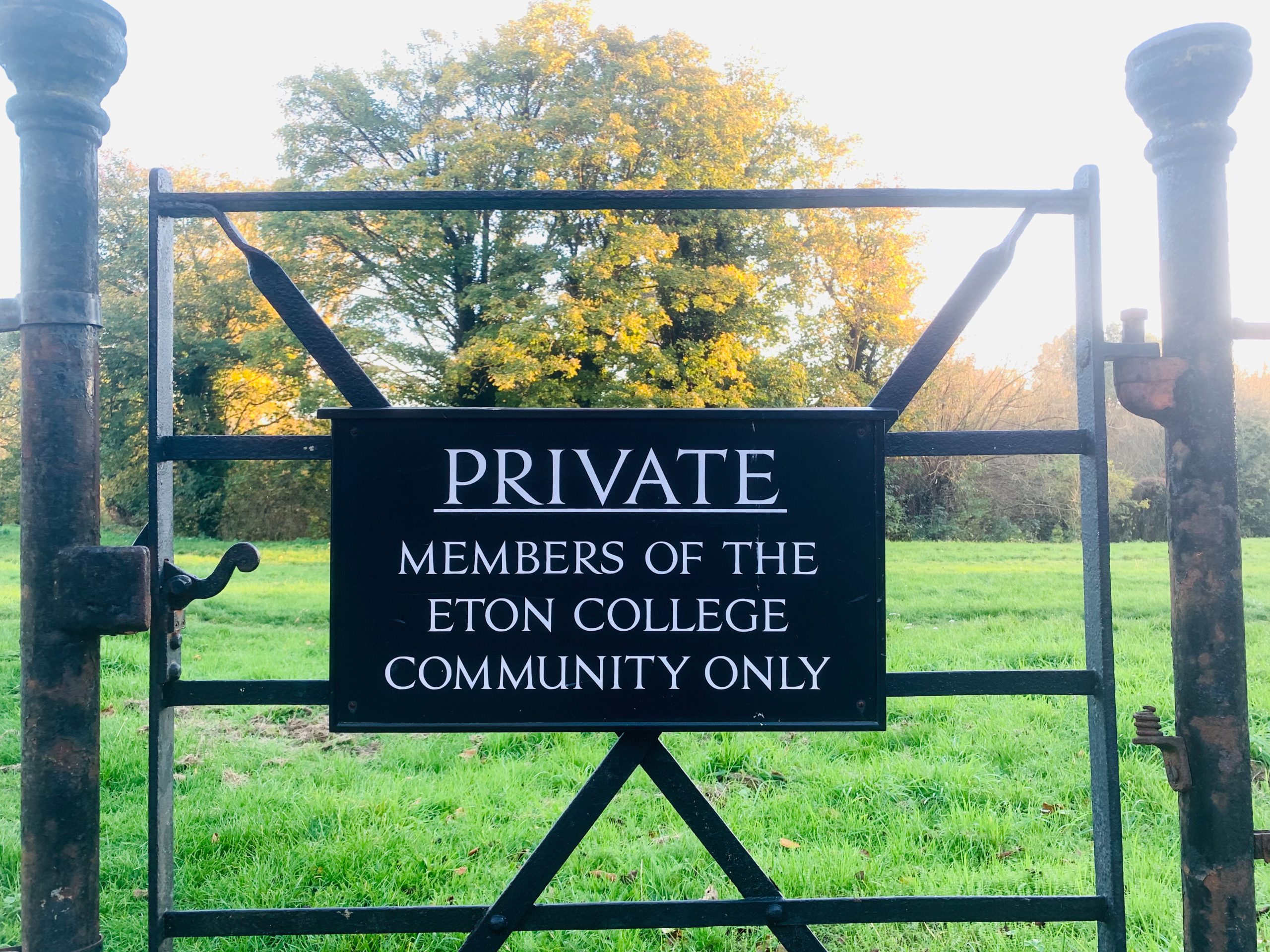
'Floreat Etona’, as all good classicists know, means ‘May Eton Flourish’. But its near-gardening connotations are fitting, as the horticultural history of the college stretches back to its royal founder, Henry VI. When he died in 1471, he left provision for gardens in his will: ‘The space between the wall of the Church and the wall of the cloister shall contain 38 feet which is left for to set in certain trees and flowers, behovable and convenient for the service of the same church.’
In the college archives is a mid-18th-century plan of the gardens, as well as 19th-century lists of fruit trees purchased and vegetables supplied by the garden to the college kitchen. Today, it is clear that, through more than 600 years, the two crucial factors for the gardens have always been the tranquil, collegiate buildings that form the heart of Eton and their proximity to the River Thames.
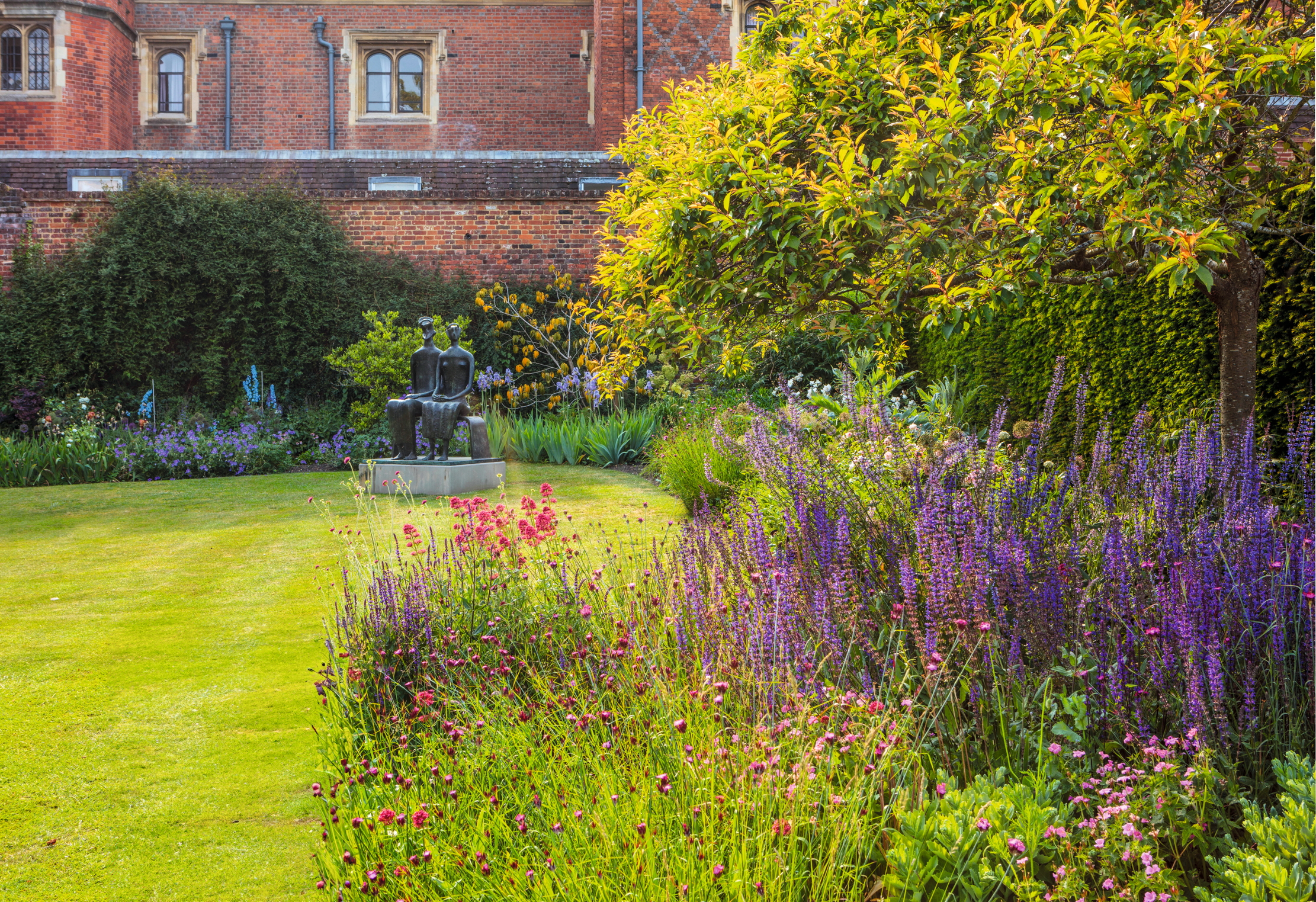
By the late 17th century, the areas that form the Provost’s Garden and Headmaster’s Garden, in front of two façades of the buildings around the central cloisters, had taken on the shape they retain today. Somewhat later, the larger Fellows’ Garden (now the Vice-Provost’s Garden) was added next to the Headmaster’s Garden.
A short walk from this core group is the unexpected treat of Luxmoore’s Garden, created in the mid 19th century by a college housemaster, H. E. Luxmoore, and hidden away on an island in the Thames.
In the early 20th century, the Provost’s stable block was close to one side of his garden, but, in 1929, a generous donation of £2,000 from the King of Siam (who had been educated at Eton) enabled the creation of a garden named after its founder on the site of the now redundant stables. Eighty years later, the small rectangular garden was reopened, having been redesigned by another Old Etonian, garden designer James Alexander-Sinclair, in the first of a series of projects by him that has breathed new life into the formal gardens.

Mr Alexander-Sinclair was engaged by Eton’s Vice-Provost, the distinguished historian Andrew Gailey, with a brief to refresh the planting and design without changing the essential character of the King of Siam’s, Provost’s and Vice-Provost’s gardens. He has achieved this with skill, injecting a modern style with his choice of plants, at the same time as retaining the formality appropriate to the setting. By repeating a selection of plants in the different areas, he has created a subtle sense of continuity.
Semi-circular steps lead down into the slightly sunken King of Siam’s garden, a rectangle of neat gravel with borders on either side planted with clumps of mixed perennials and grasses, including hydrangeas and Geranium ‘Orion’. Against the wall at one end is a handsome statue of Perseus, with banks of Persicaria amplexicaulis ‘Taurus’ on either side that provide a good example of Mr Alexander-Sinclair’s planting for shape, as well as colour.
Sign up for the Country Life Newsletter
Exquisite houses, the beauty of Nature, and how to get the most from your life, straight to your inbox.
At the other end, enclosing yew hedges suggest the perfect place for a bench to sit and contemplate the planting. However, as Mr Alexander-Sinclair explained to me, ‘no bench or other seating is allowed in the garden, because it is deeply disrespectful to sit in the presence of the King of Siam’.
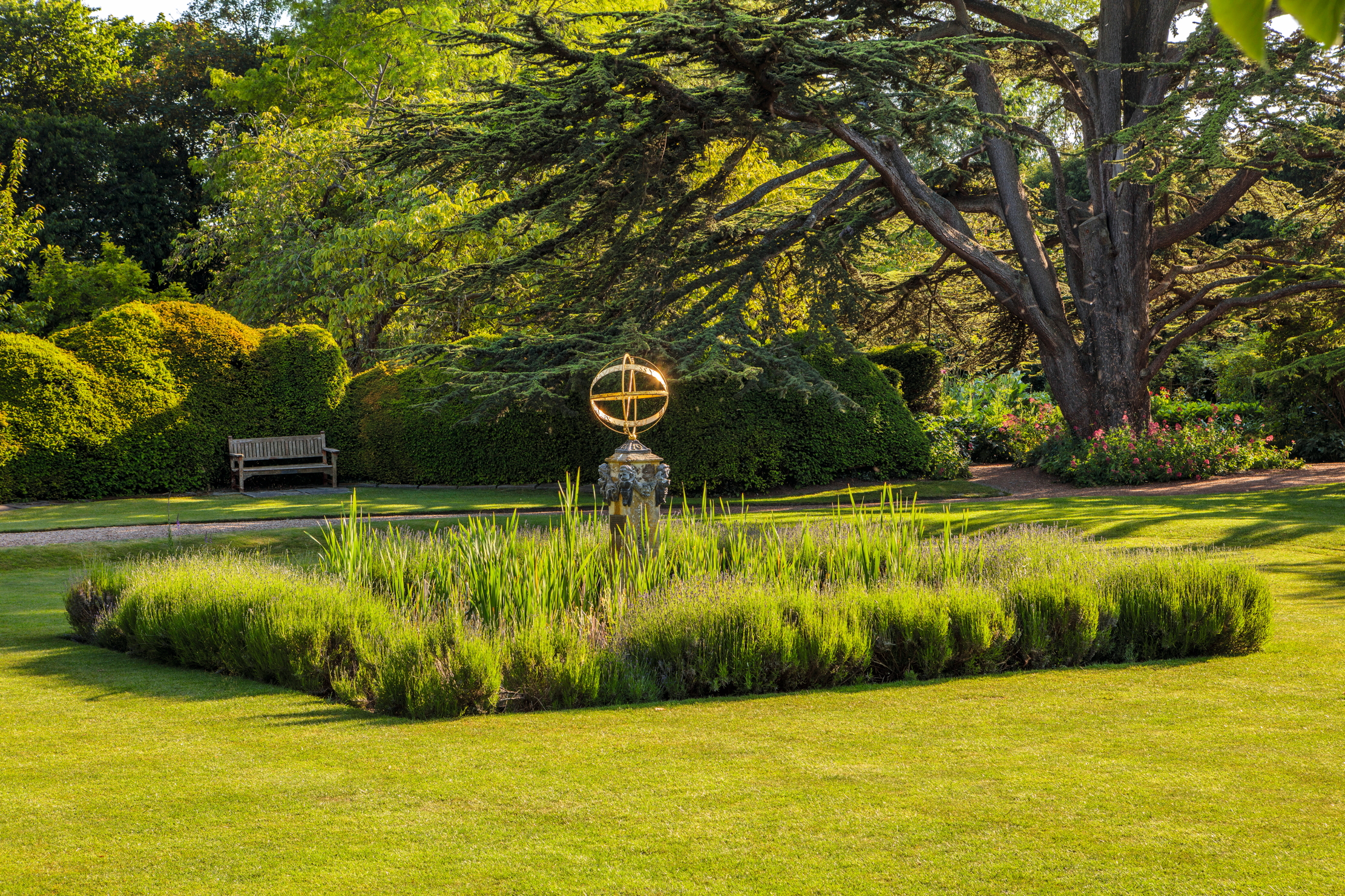
A paved path leads from the semi-circular steps beneath pairs of winter-flowering cherries to matching steps up to a suitably grand iron gateway — of tall piers between low brick walls and iron railings with new hedges behind — that opens into the Provost’s Garden. Immediately, you have a sense of being in a simple, but long-established formal garden, enclosed on one side by the façade of the building and on the other three by brick walls and yew hedge. A magnificent, spreading magnolia stands in one corner close to the building and the pergola (added by Mr Alexander-Sinclair) set against one wall is covered with a wisteria of similar age. Fine modern sculptures add to the composition.
The Headmaster’s Garden, which has often had to accommodate a family, leads into the largest and most impressive of the three areas, the Vice-Provost’s Garden. As you enter from the Headmaster’s, you get a wonderful view to the Round Tower of Windsor Castle. The long mellow brick façade of the building with its distinctive towers looks onto a lawn shaded by two majestic cedars. One has a plaque noting that it was a gift from the President of Lebanon to the Provost, Lord Caccia, in 1971, since when it has achieved spectacular growth.
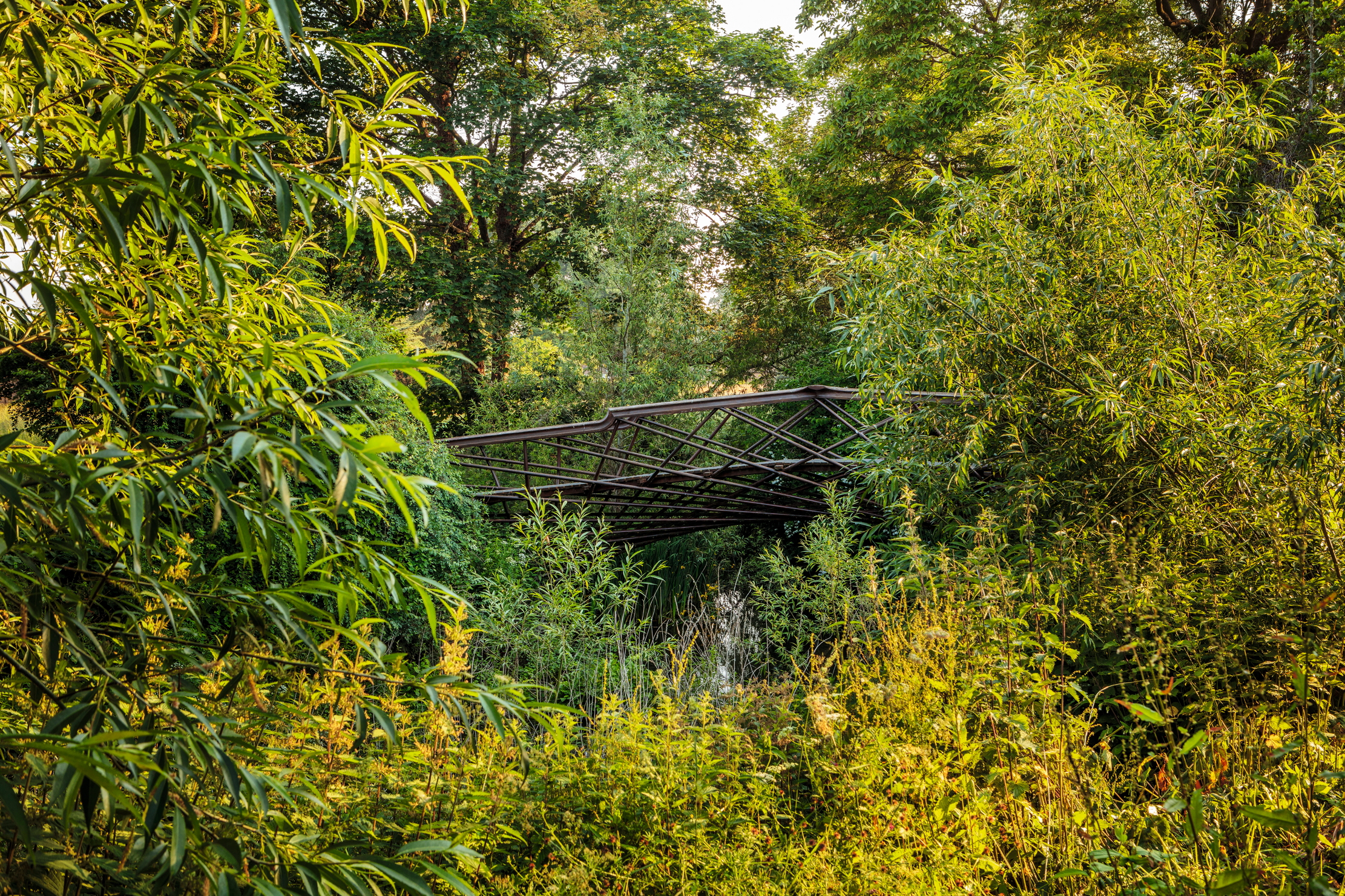
Mr Alexander-Sinclair carried out skilful replanting in the Vice-Provost’s Garden, with the addition of low yew hedges and billowing white-flowered Hydrangea arborescens ‘Annabelle’ mixing again with Geranium ‘Orion’ immediately in front of the building. On the far side of the lawn, his replanting of the long border is a triumph. Different plants are repeated all the way along to emphasise their individual features, from vigorous clumps of irises and phlomis to groups of tall alliums and valerian and the illuminating cerise-pink colour of Rosa mutabilis.
From the Vice-Provost’s Garden, it is a short walk across a meadow that used to be cut regularly, but is now left and cut once a year for hay, to one of two bridges that lead onto the island, where you discover Luxmoore’s Garden. Paths shaded by mature trees and curving between perennials and dense shrubberies give the garden an immediate sense of secrecy, which increases the impact of discovering a peaceful open lawn with a central gold armillary sundial standing above a square of irises and lavender hedges. One corner of the lawn is shaded by the spreading canopy of a cedar, from which yew hedges clipped into rolling domes extend on both sides.
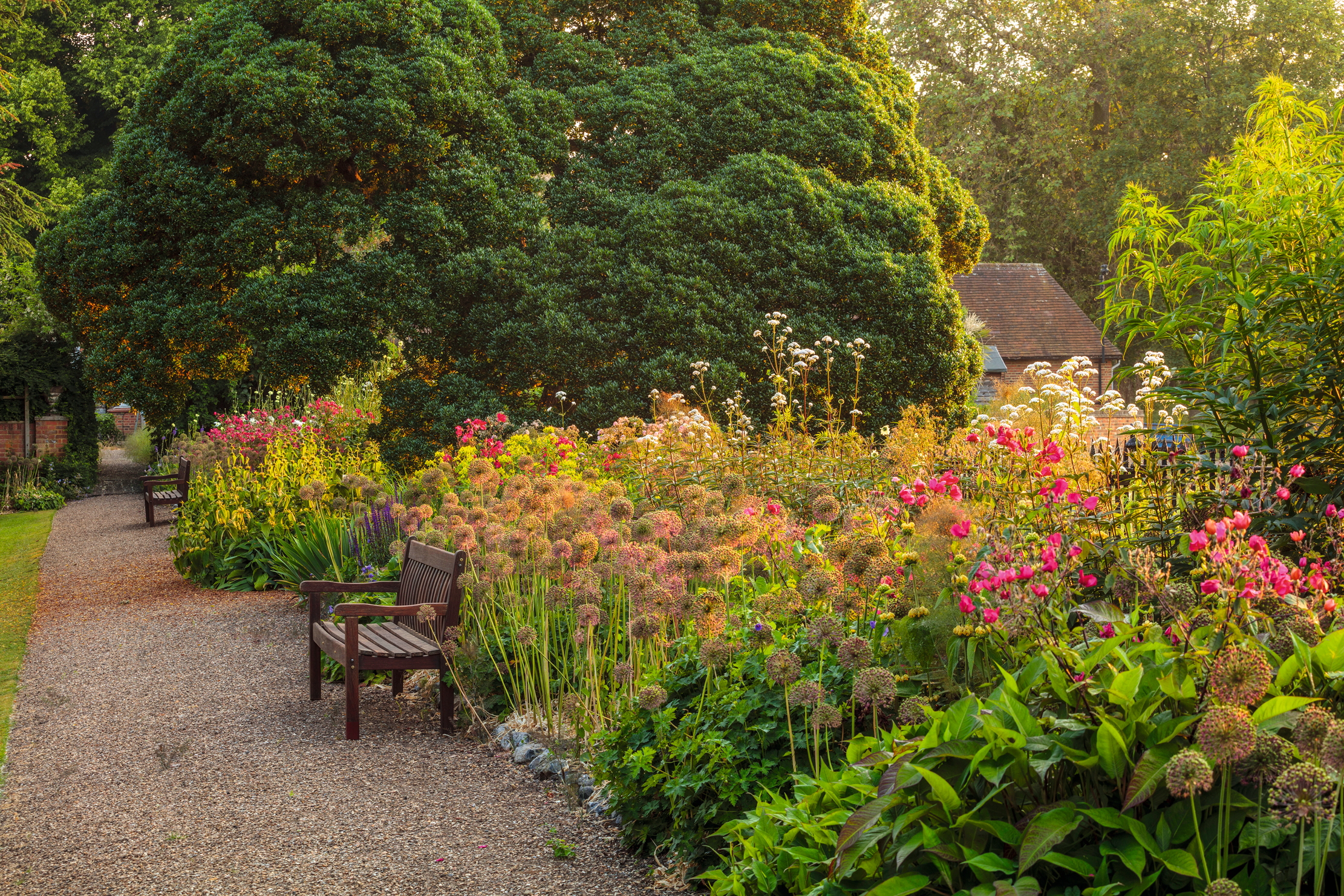
Different vantage points in Luxmoore’s Garden offer varying glimpses of the college chapel, the best view appearing as you approach the second bridge. Beyond, towards the far end, is an area planted informally with fruit trees that suggests it was once an orchard. This leads to an idyllic, pastoral view of the River Thames, edged on both sides with tree canopies that sweep down to the water.
The riverside trees will have grown up, died and been replanted over the centuries, but, otherwise, it is a view that has probably not changed much in the 600-plus years of Eton’s history and gives so much character to the college’s group of gardens.
George Plumptre is chief executive of the National Garden Scheme, for which the gardens of Eton College, Berkshire, open on July 3
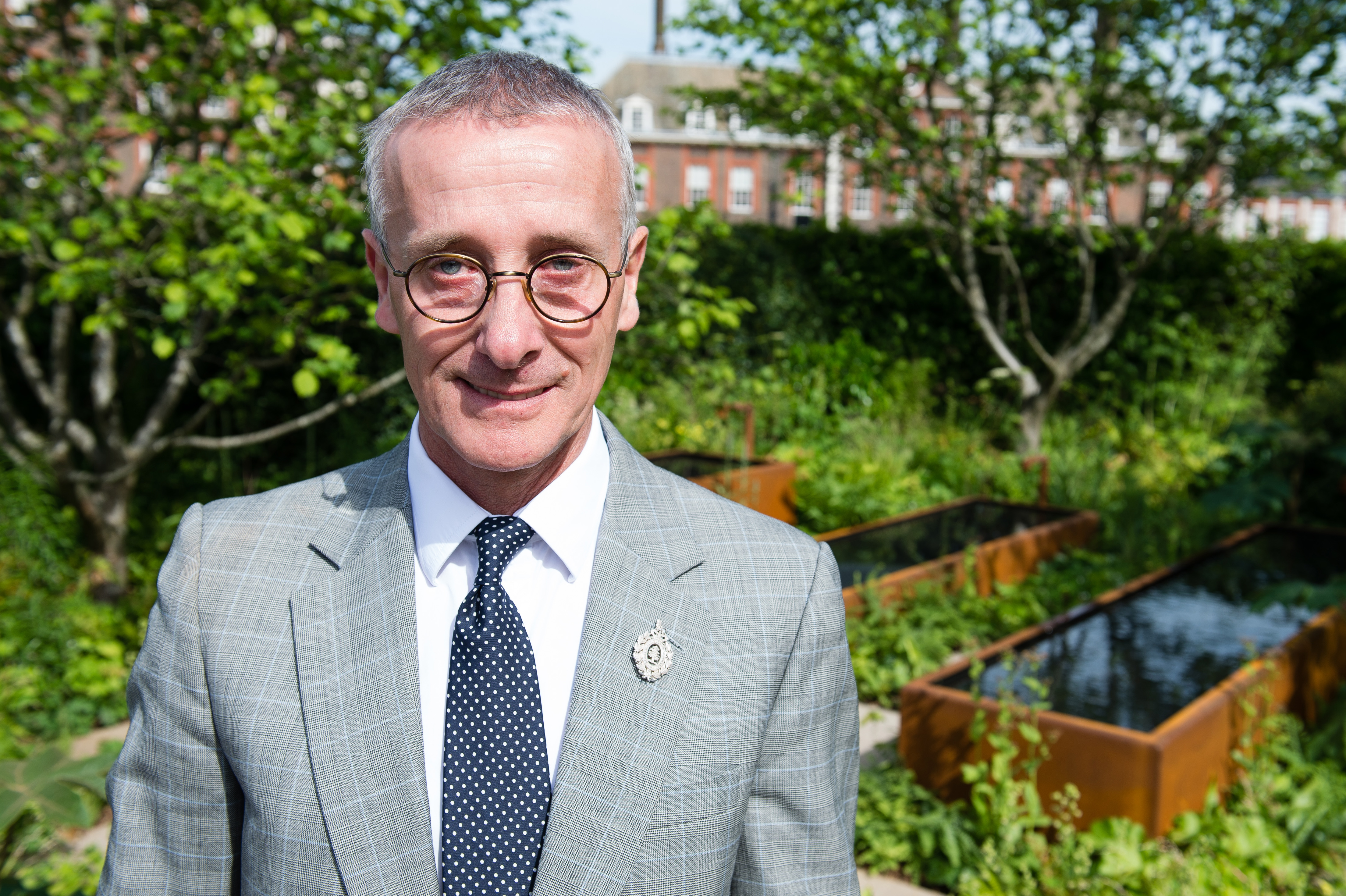
'Nothing wrong with a bit of furore': An insider's guide to judging the Chelsea Flower Show, by RHS senior judge James Alexander-Sinclair
James Alexander-Sinclair comes to the Country Life podcast to talk about his career in gardening, and his two decades spent
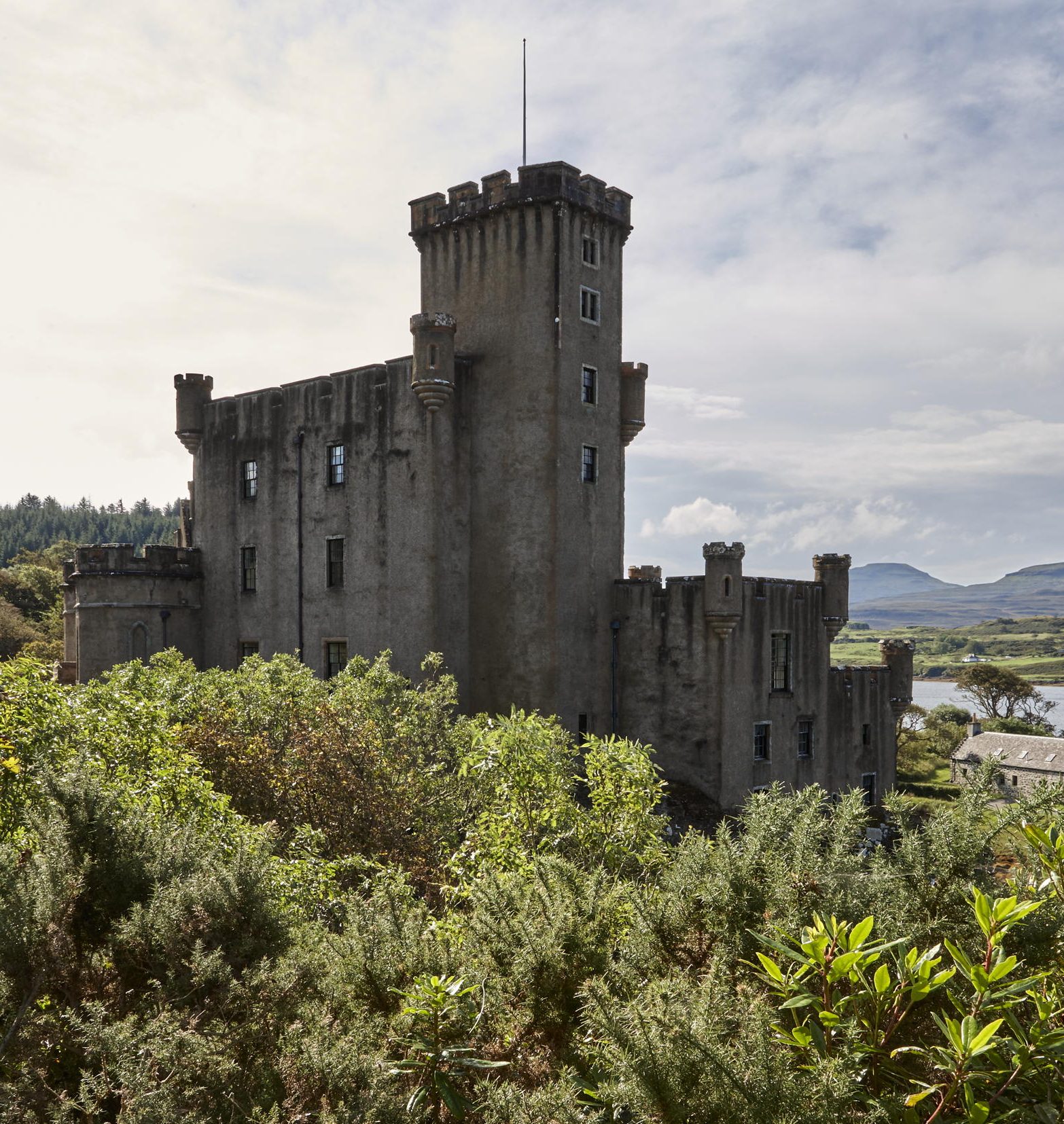
The gardens at Dunvegan Castle: Hard landscaping on the Isle of Skye
Despite their exposed position, the gardens of Dunvegan Castle, home of Clan MacLeod for 800 years, have nurtured an important

If you sow seeds in June, you might just be putting down bird seed... but it's worth the risk if you love fresh summer salads
Our grow-your-own expert Mark Diacono suggests a string of ideas for what you can plant as summer kicks in.
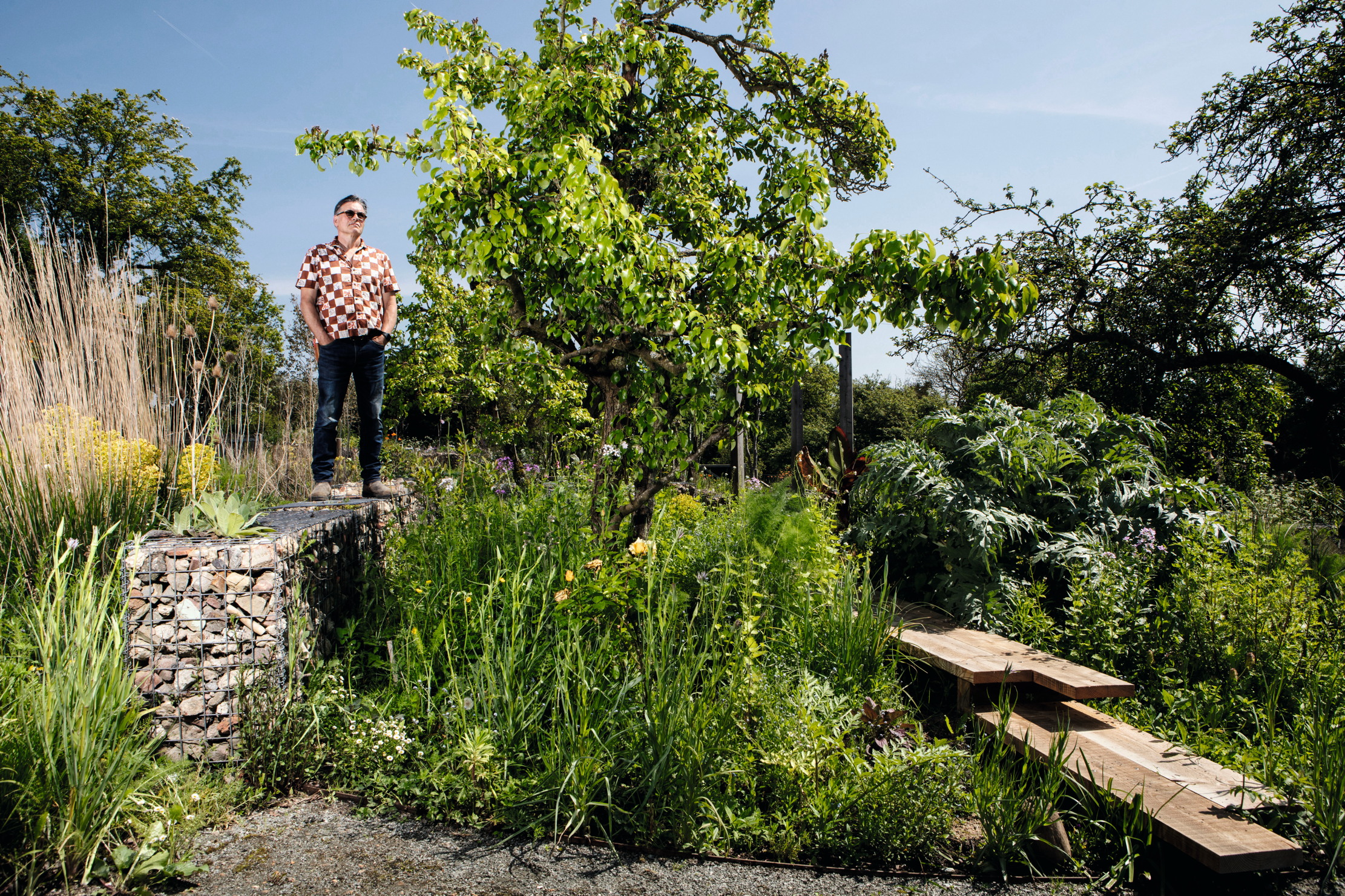
'Bugs don’t care what things look like, they simply want somewhere to live. We try to make it beautiful for the sake of the people': Meet the man who's bringing the buzz back to gardening
The founder of the Grass Roof Company tells Country Life about why a derelict oil refinery contains a greater variety
-
 'To exist in this world relies on the hands of others': Roger Powell and modern British bookbinding
'To exist in this world relies on the hands of others': Roger Powell and modern British bookbindingAn exhibition on the legendary bookbinder Roger Powell reveals not only his great skill, but serves to reconnect us with the joy, power and importance of real craftsmanship.
By Hussein Kesvani
-
 Spam: The tinned meaty treat that brought a taste of the ‘hot-dog life of Hollywood’ to war-weary Britain
Spam: The tinned meaty treat that brought a taste of the ‘hot-dog life of Hollywood’ to war-weary BritainCourtesy of our ‘special relationship’ with the US, Spam was a culinary phenomenon, says Mary Greene. So much so that in 1944, London’s Simpson’s, renowned for its roast beef, was offering creamed Spam casserole instead.
By Country Life